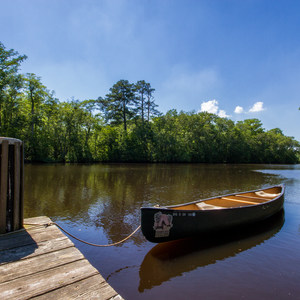Assateague Island National Seashore is located off the Delmarva Peninsula and, with over 35 miles of pristine barrier island beaches, marshes, and forest, is sure to have something for everyone.
The park spans two states, Maryland and Virginia, but each state has its own entrance about an hour apart. Crossing state lines within the park is not allowed. The Maryland side is open all hours and all days, whereas the Virginia side closes at night to the public. In addition to Maryland's Assateague Island Campground, backcountry camping is available on the Maryland side as well.
Besides its miles of coast, Assateague is most famous for its herd of wild ponies, often seen on the beach or in the marshes. The origin of these horses is unclear, but it is rumored that they came to the island by way of a Spanish shipwreck during the Colonial era. While these ponies may seem tame, they are wild animals, and not only can they harm you, but they can harm themselves by ingesting your food (which they will do if given the opportunity). Use the same precautions with food as you would in bear country.
Another great thing about the park is its OSV (over-sand vehicle) zone. With the purchase of a special permit and a four-wheel-drive-capable vehicle, you can drive for miles along the shore, allowing for a more secluded and intimate beach experience. There are also quite a few trails displaying the different environments within the island.
Up until the 1960s the island was actually connected to the mainland, and it was slowly being developed with the idea of turning it into a resort. These plans were all abandoned during the Ash Wednesday Storm of 1962, and the remaining structures were left to the elements.
Assateague is one of the first areas administered by the National Park Service to actively embrace climate change in its future park management plans.
































Comments
Sign In and share them.